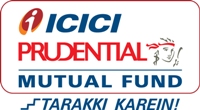How to get a snapshot of your funds with Mutual Fund Fact Sheet

Have you ever wished to know more about the mutual funds scheme you have invested in and the fund house (AMC)? As you have invested your hard earned money, you probably should!When you start an investment in any mutual fund scheme your knowledge about the scheme will go a long way in helping you make some wise decisions if you know or read the fact sheet of the scheme which is provided by the AMC at monthly intervals.
While knowing your risk profile and choosing a scheme from an appropriate category may help you to achieve your financial goals, but that may not be enough. In order to get the confidence in selecting the right funds, you should read and understand the factsheet of a mutual fund that plays a crucial role when investing your money in the selected schemes and even after that.
Read – How to invest in mutual fund schemes: tips and facts
Mutual Fund Fact Sheet is one document from where you can get the minute details of the scheme. Here are the key highlights from a factsheet that is a ‘must-read’ for all investors -
Investment Objective:
All schemes have a specific investment objective and reading the investment objective will help an investor to understand what the scheme aims to achieve – in terms of capital appreciation, regular income, liquidity etc. An investor should carefully read the objective of the fund as stated in the factsheet before investing in the fund.
For example, let us see what is the investment objective of ICICI Prudential Focused Bluechip Equity Fund?
“To generate long-term capital appreciation and income distribution to unit holders from a portfolio that is invested in equity and equity related securities of about 20 companies belonging to the large cap domain and the balance in debt securities and money market instruments. The Fund Manager will always select stocks for investment from among Top 200 stocks in terms of market capitalization on the National Stock Exchange of India Ltd. If the total assets under management under this scheme goes above Rs. 1,000 Crores the Fund Manager reserves the right to increase the number of companies to more than 20.”
Basic scheme details:
There are different schemes available in the market - equity or equity oriented, debt or debt oriented or hybrid or ELSS etc. Factsheet provides information about the nature of the mutual fund scheme. Equity mutual fund schemes will be ideal for an investor aiming at capital appreciation while a debt fund or income fund will be the perfect investment scheme if an investor is looking to preserve capital. Likewise an ELSS scheme can be effective if you are looking to save taxes under Section 80C.
Portfolio allocation:
Investment in mutual fund can be considered as a portfolio investment which is spread across sectors and stocks to achieve effective diversification. Broadly, the categorization of portfolio holding of a mutual fund scheme can be under two sections:
Read why diversified equity mutual funds are good long term investment choices
Sector allocation
- If you are investing in a mutual fund scheme, there is a higher probability of the mutual fund scheme, especially if it is a diversified scheme, investing in more than one sector. This is basically to reduce the higher volatility risk when the fund is concentrated in one sector. The Fact Sheet shows the allocation of the scheme to each sector.
Did you know how to build the perfect investment portfolio
Portfolio holdings
- An investor can know the top 10 stocks that a fund invests in across sectors, along with the weight age of investment holdings.By looking at the portfolio allocation, you will get a fair idea of where and in which sector the fund manager is investing your money.
Fund manager's details:
It is very important to know your fund manager, whom you give the mandate to manage the scheme. To maintain utmost transparency with the investors, the name of the fund manager, who invests the money collected by a mutual fund scheme, is also mentioned in the fund factsheet along with his qualification and experience. To dig deeper about the fund manager you may visit the AMC website and check what is the performance of other schemes managed by him/her.
Performance:
Investors should remember that fund performance is only ‘past’ indicator and not an assurance of future returns. A complete understanding of the fund's performance is useful for an investor to compare with its benchmark over a period of time. Generally, Fact Sheets reflects the lump sum and SIP returns of each scheme over various time periods and compares the scheme return with that of benchmark. By looking at these numbers the investor can easily make out if the scheme is able to beat the benchmark return or not. A scheme beating the benchmark return can be considered a good scheme.
Did you know how important is past performance
Rating profile:
The creditworthiness of the mutual funds is disclosed by the ratings, particularly in debt funds. Based on the creditworthiness in the ratings, a fund evaluates whether to invest in securities or not. Investors should check the rating profile of the instruments the fund has invested in.
Net Asset Value (NAV):
The price of one unit of the particular mutual fund after deducting all related and admissible expenses is NAV. The factsheet gives you the fund NAV across all plans and option as on the last day of the month. Instead of tracking the NAV daily, even if you know the NAV at the end of every month, it is fine. NAV is always calculated at the end of every business day and each plan has a different NAV.
If you want to know the NAV of your scheme, please check this https://www.advisorkhoj.com/mutual-funds-research/latest-NAV
Loads and expense ratio:
While investing in mutual funds, an investor should be aware of the load and expense charges which will have a bearing on the overall cost of the fund. Loads are the cost that an investor pays while entering or exiting a fund while the cost of managing a mutual fund which is charged to the investor is known as the expense ratio. Usually all the funds nowadays do not have entry loads. However, the investor may have to pay exit load if he or she is redeeming from the scheme during the exit load period. The Expense Ratio is shown as a breakup between a regular and a direct plan. However, these charges should not be considered as a deal breaker while deciding which fund to invest in as an investor should understand that it is a fee charged by the scheme to manage the scheme and meeting all kind of expenses.
Assets under management (AUM):
An investor can know the total size, which is known as asset under management or AUM, of a mutual fund scheme by checking the AUM. AUM is the total market value of all the assets that a scheme has in its portfolio.
Scheme's Benchmark Index:
The performance of every scheme is always compared to the benchmark it is following. Since every scheme is designed with their own unique characteristics of fund management, therefore, to judge if the scheme is doing good or not, one has to see if the scheme is able to beat its benchmark return or not. Some of the common benchmarks you may have known are Nifty, Sensex, BSE200, BSE100 and CNX 100 etc.
Read the importance of market benchmarks in mutual funds
Application Amount for fresh subscription:
The factsheet provides information about the minimum investment amount and the subsequent additional amounts in case of lump sum as well as SIP investments.
Quantitative data:
The fact sheet shows the quantitative data like, portfolio turnover ratio, beta, sharp ratio and standard deviation etc.
An investor understands the statistical measure of the range of an investment’s performance with the help of Standard deviation. In short, there is wider range of performance if a mutual fund scheme has a high standard deviation, implying greater volatility.
Portfolio Turnover Ratio can be defined as the ratio of the amount of sales or purchases divided by the net assets of the fund. If there is greater amount of sales or purchase of assets done by the fund manager, then there is higher portfolio turnover and higher transaction fees paid by the fund.
Beta help know an investor about the measure of an investment’s volatility vis-a-vis the market. An investor can consider the security to be less volatile than the market if the Beta is less than 1, while Beta greater than 1 will mean the security’s price is more volatile than the market.
Sharpe Ratio can calculate the risk-adjusted returns of the scheme. Generally, it is calculated on a monthly basis and then annualized for easy comprehension.
It is calculated using the formula given below:
Sharpe Ratio = (Average fund returns – Risk free rate)/ Standard Deviation of fund returns
A fund with a higher standard deviation should earn higher returns to keep its Sharpe Ratio at higher levels. Conversely, a fund with a lower standard deviation can achieve a higher Sharpe Ratio by earning moderate returns consistently. Ideally you might consider a fund good which has a higher Sharpe Ratio.
Yield to Maturity can tell you the rate of return anticipated on a bond held until maturity with the help of Yield to Maturity ratio, which is expressed as an annual rate.
Conclusion
An investor can use a factsheet as the guide to invest in a mutual fund scheme. It is advisable to go through it before investing to avoid half-informed investing facts that may well be dangerous for your mutual fund investments. Investors can always get professional help through a mutual fund advisor who are versed with investing in mutual funds and can help make a more informed decision.
Suggested reading: Mutual Funds demystified
Mutual Fund Investments are subject to market risk, read all scheme related documents carefully.
RECOMMENDED READS
LATEST ARTICLES
- Why you need to have hybrid mutual funds in your portfolio: Different types of funds Part 2
- Why you need to have hybrid mutual funds in your portfolio: Misconceptions Part 1
- Which is the best time to invest in mutual funds
- Economic slowdown: Is it real and what should you do
- Importance of liquidity in investing: Mutual funds are ideal solutions
An Investor Education Initiative by ICICI Prudential Mutual Fund to help you make informed investment decisions.
Quick Links
Follow ICICI Pru MF
More About ICICI Pru MF
POST A QUERY




